Do you like tuning your boat? Do you hate it? Do you even know what tuning is? The thing is, it’s many different things to different people. It’s easy to see it as a black art, some mystery that only the great and the good – and possibly Harry Potter – will ever understand. So the aim of this article is to demystify the process, and to show that many different attitudes and tuning philosophies can lead to the same result. We polled some of the top names in British sailing to give us their insights into the ‘dark art’. Not all of them are in agreement, but all share gems of wisdom that will better equip you to tune your boat more effectively, regardless of what you sail.
Ian Barker, former sailmaker, RYA 49er coach, Olympic 49er silver medallist and World Champion in Enterprises and 505s
I’ve seen people spend a lot of time on tuning, buying a rig gauge, and so on, and not really know what they’re doing. Tuning guides are written by someone who has a certain method of doing things, and if you don’t follow the same method, or don’t even know what that method is, you might not tune your boat properly.
Some people misinterpret the information the guide, and therefore tune the boat wrongly. In a 505 tuning guide, when it says set the strut in the ‘neutral position’, if you’ve got a different idea of what that means compared with the sailmaker, you could end up with the rig way off where it should be. If you take time to learn the principles of good rig tune, of what spreaders do, or the effect of mast rake, then any tuning you do, you should do better. Getting sailmakers to help you as often as possible is a good tip. The more you talk to them, the more you’ll understand the principles.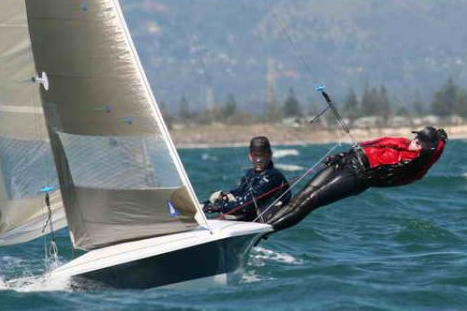
Aside from getting your standing rigging set up correctly, good boat tune is about accurate sheeting of the sails. Jib sheet position is one of the singlemost crucial controls. When I’ve done two-boat tuning in 505s, we’ve found that getting the jib sheeting right is more important than which of two mainsails to use. It’s that important. So get to know your jib fairlead positions intimately. Draw sheeting angles on your jib clew. Some jibs even come ready-supplied with sheeting angles marked on the clew.
Rick Perkins, former Fireball National Champion and reigning Musto Skiff National Champion
I’m into tuning. I like tweaking boats, which is why I sailed the National 12 this year with my wife. Unfortunately we were too heavy and no amount of tuning was going to compensate for that.
In the Musto Skiff, I don’t do much tuning. I don’t think many people do. The top sailors’ settings are freely available on the internet or by asking them in the boat park, and I think most people take the view that they should just get on some good standard settings and then focus their attention on mastering the boathandling. For a boat like the Musto Skiff, I reckon that’s the best place to focus your time. If you’re in a boat that’s easier to sail, maybe tuning should be higher on your priority list.
The other thing about the Musto is that we sail with a pinned rig, so you can’t change it when you’re racing. With a pinned rig you need to learn to sail with a good basic setting that will get you through all wind conditions. You can’t afford to get caught short if the breeze changes. If you sail a boat with a fully adjustable rig, then you’ve got more opportunity to experiment with different settings optimised for different wind conditions and sea states.
Nick Craig, multiple National and World Champion in OKs, Enterprises, B14s and RS400s
A few years ago I did a load of two-boat tuning with Roger Gilbert in the RS400. We wanted to find out what were the fast settings, and it certainly helped us do that. But more importantly, it meant we spent loads of time trying to sail in close proximity to another boat, to live in difficult situations, either close to windward or leeward. Which gives you loads of confidence in situations off the start line and around the race course. The other thing we found was that the rig settings are not nearly as important as you might think. How we trimmed and steered the boat was way more crucial.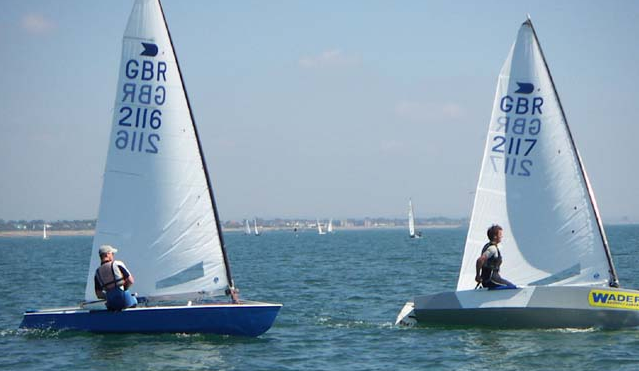
Richard Estaugh, Speed Sails, multiple National and World Champion in Enterprises, GP14s and Fireballs
We tend to keep it quite a bit more simple than most sailors. People tend to follow the tuning guides a bit too much. A lot of the time – instead of moving the rake up or down, spreaders forwards and backwards - you’re better off just using your mainsheet, jib sheet, kicking strap, the things that are easier to move, to alter your set-up.
You might not be the fastest in certain wind conditions but across all the conditions you’ll be pretty averagely fast and when the wind goes up or down you’re not going to be completely psyched out, You’re not going to think, ‘Should I be on 22’6 rake or 22’10 or whatever?’ We do move the rake up and down but perhaps not as much as others. If we do find ourselves on the wrong rake, it doesn’t bother me. I just get on with it. It’s more important to be ‘heads up’, looking around at what’s going on.
Mike Lennon, Hyde Sails, multiple Champion in International 14s, Albacores, Tornado, Melges 24 and Flying Dutchman
Tuning is an important part of sailing fast, but how important it is to you, is really a matter of what standard you’re at with your all-round sailing. For example, I’d suggest tuning should not be high on your agenda if you can’t tack the boat! If you’re sailing with a new crew, you’ve got to get the boathandling sorted first.
Also, it’s true that some rigs are faster than others, but they might also be harder to use. People are always going to tend towards wanting to get the ‘fastest’ rig, but if it requires lots of adjustment through the wind range – if it’s not very automatic – you’ll only get the best out of it if you have the time and experience to understand it. So if you’re limited to sailing just 30 or 40 days a year, for example, it might make more sense to get a rig that is easier to use, that does more of the work for you. It might not be the fastest rig in terms of potential, but in your terms it might well be the fastest.
Boat Speed
9 Ways to Rig Tune Enlightenment - Part 1
Digest what these people have to say, take some notes, then read the second part of our champions’ guide to rig tune...
Related Articles

Is it me, or the boat? **
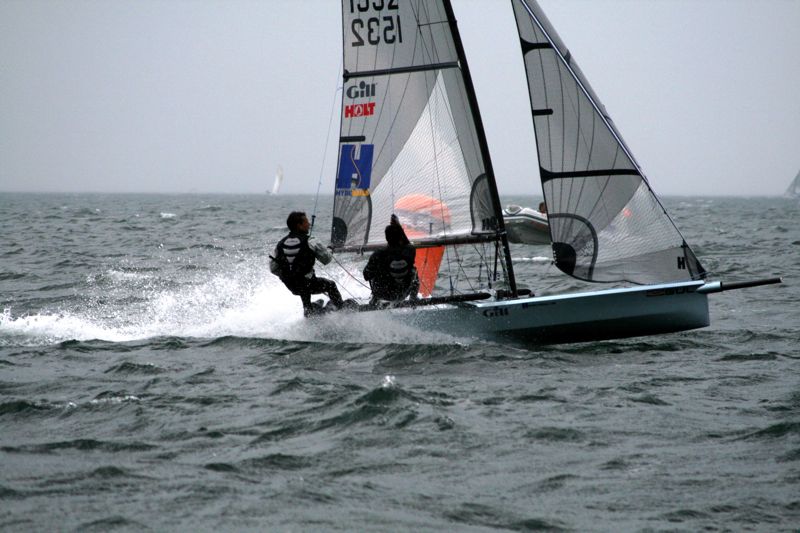 In a pure one-design like a Laser, if you’re slow then you haven’t got much to blame but yourself. In a development class like an International 14, though, there is plenty you can blame. Andy Rice draws on his own experiences in the 14 to work out how to analyse performance when there are so many variables...
In a pure one-design like a Laser, if you’re slow then you haven’t got much to blame but yourself. In a development class like an International 14, though, there is plenty you can blame. Andy Rice draws on his own experiences in the 14 to work out how to analyse performance when there are so many variables...
Read More
 In a pure one-design like a Laser, if you’re slow then you haven’t got much to blame but yourself. In a development class like an International 14, though, there is plenty you can blame. Andy Rice draws on his own experiences in the 14 to work out how to analyse performance when there are so many variables...
In a pure one-design like a Laser, if you’re slow then you haven’t got much to blame but yourself. In a development class like an International 14, though, there is plenty you can blame. Andy Rice draws on his own experiences in the 14 to work out how to analyse performance when there are so many variables...
Pre-bend and Mast Rake: How they work together **
Read More
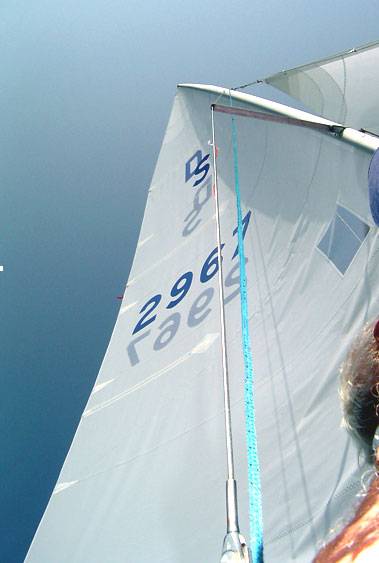
Prebend and mast rake are two very different things but also very inter-related factors when setting up your rig for optimum speed...

Sailing multihulls upwind with Mitch Booth
Read More
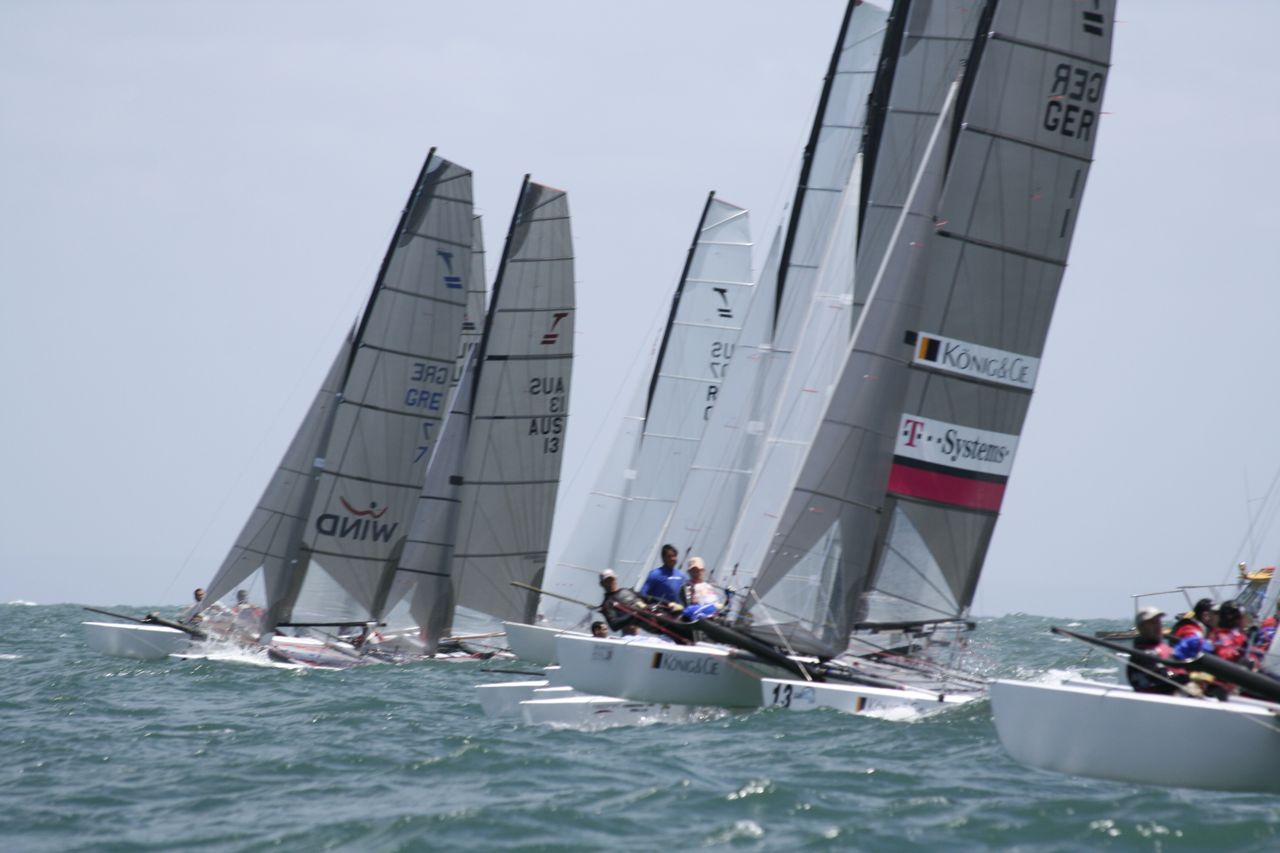
Double Olympic medallist Mitch Booth explains his approach to sailing catamarans upwind as rapidly as possible. "When you’re sailing a high-performance catamaran upwind, you’re looking to achieve neutral feel in the helm, perhaps a slight pull into the breeze. A good sign of ideal set-up is if you don’t have to move too much mainsheet...."

Tune your F18 cat for ultimate speed, with Rob Wilson **
Read More
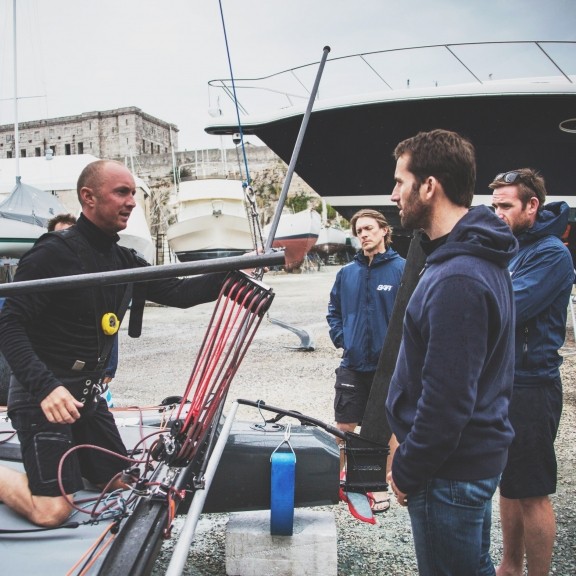
Rob Wilson, Round Texel Race winner and former Olympic squad member, talks through his approach to tuning a Formula 18 catamaran for top upwind speed, looking at the important stuff and some of the stuff that people THINK is important but can sometimes be just a distraction...

Holding Your Lane: Etchells World Champ tells how
Read More
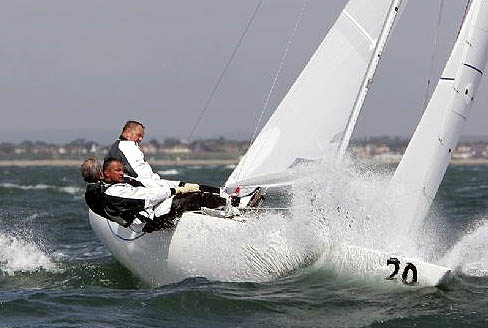
Holding your position is one of those skills that separates the good from the average sailors. "He's good at holding his lane," is one of those phrases you'll hear about a really talented sailor. Etchells world champion Andy Beadsworth reveals some clues to this dark art...
